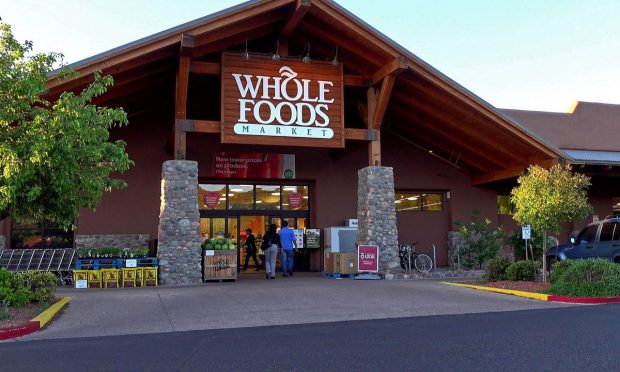Whole Foods Looks to Sate Consumer Hunger for Prepared Meals

Whole Foods is reportedly considering opening commercial kitchens amid rising consumer demand for prepared foods.
The Amazon-owned grocer would launch these kitchens to make meals for its food bars and refrigerated cases, The Wall Street Journal reported Sunday (April 9), citing people familiar with the matter.
The report notes this reverses the company’s trend of outsourcing its food production, and that operating its own kitchens could give the grocer more control over the quality of its prepared meals. Sources tell the WSJ Whole Foods is also considering purchasing existing kitchens.
Jeff Turnas, senior vice president of global culinary at Whole Foods, said as much in an interview with the news outlet. He said the company is constantly exploring food production, including running its own facilities, using in-store kitchens and working with third parties.
Turnas added that COVID led the company to rethink its food offerings. Grocery chains have begun adding more prepackaged meals, and Whole Foods will follow suit, with plans to expand its sushi, sheet cake and juice bar offerings in the months ahead.
The company is exploring this expansion as consumers — particularly the higher-income ones — are increasingly seeking out quick, convenient meal options during their grocery visits.
PYMNTS’ study “Digital Economy Payments: Consumers Buy Into Food Bargains” found that 37% of consumers had purchased prepared food during their most recent grocery trip, a share that was on the rise.
The report also found that 43% of consumers with annual income of more than $100,000 had purchased prepared meals in their most recent grocery purchase, compared to just 36% of middle-income consumers and 31% of those whose income is lower than $50,000.
Grocers have been working to meet this demand.
In an interview with PYMNTS, Atul Sood, chief business officer at Kitchen United, the ghost kitchen and virtual food hall service that runs grocery giant Kroger’s in-store multibrand pickup-and-delivery restaurants, said consumers want to see more name-brand restaurant options at their supermarkets.
“What we had as an initial hypothesis was that when consumers do shopping for the week, they don’t necessarily want to cook that night,” Sood told PYMNTS.
“That seems to be really clicking with consumers. As soon as they get educated about the option of ordering from restaurants in a grocery store, repeat orders tend to be very high and consumer retention tends to be very strong.”
Indeed, in an interview with PYMNTS, Geoff Alexander, chief executive of fast-casual chain Wow Bao, argued that supermarkets are becoming the go-to spot not just for raw groceries but also all food-at-home categories.
“The supermarket has really become where consumers get all their meals at home,” he said. “It’s not just dining out now in restaurants — grocery stores are finding different ways to keep people inside the store to find their next meal. Whether it’s prepared food counters or partnering with restaurants, they’re making additional opportunities for people to do one-stop shopping.”
